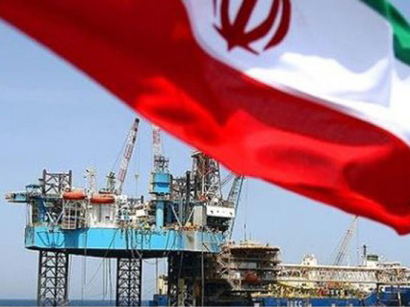Baku, Azerbaijan, Feb 1
By Aygun Badalova - Trend:
Iran's return to the global oil market, as well as its consequences for the global prices is overestimated, Cyril Widdershoven, Middle East geopolitical specialist and energy analyst believes.
They [Iran] have around 30 million barrels at sea, which is based on 500,000 barrels per day an extra volume in market for around 60 days. This is not enough to really force markets totally down," Widdershoven told Trend.
Expert believes that the further increase in the country's oil production will take another 3-5 years, as the financial instruments and necessary technology are not available at this time.
Moreover, he said, Iran's investment needs are too high, while Chinese and Indian companies are not able to cope with challenges.
International sanctions imposed on Iran with regard to its nuclear program have been removed as the Joint Comprehensive Plan of Action (JCPOA, aka nuclear deal) entered the implementation phase on Jan. 16.
Iranian officials have repeatedly said that Tehran will increase its current oil export of one million barrels per day by 500,000 barrels as soon as sanctions are removed. The figure is planed to rise by another 500,000 to two million barrels per day within a six month period at the next step.
Iran's current oil production is estimated to be around 2.8 million barrels per day (mbpd), of which about one million barrels are exported.
There are concerns that Iranian return on the global oil market will pose further downside risk for the prices.
Widdershoven believes that oil prices will increase in the third-fourth quarter of 2016, and the first show of recovery is already being seen on the market.
"After hype on Iran is over and reality hits in, fundamentals will force market to shut down projects, and lower [production] volumes will support higher prices," Widdershoven said.
Brent April crude futures were down 35 cents at $35.64 a barrel on Monday morning. U.S. WTI was down 57 cents at $33.05 a barrel.
Global oil prices plunged from about $108 in the first half of 2014 to below $35 currently due to glut in markets. Saudi Arabia-led OPEC failed to reach an agreement on production cut on Dec. 4, 2015.
Saudi Arabia was the one who pushed cartel's strategy shift to defend market share rather than cut output to support prices.
Widdershoven believes that the end of such a "share defending" strategy will be focused on how much pain the non-OPEC producers are still able to stand.
He believes that OPEC leaders Saudi Arabia, UAE and Kuwait will not be pushing for a change to the OPEC production quota.
"They will not be interested in taking a unilateral production cut, which will shortly result in a price increase but will have at the same time a negative impact on their own market share as other non-OPEC producers and Iran will try to fill in the gap," he said.
At present the Saudi-led OPEC strategy which is meant to regain market share and push out non-OPEC producers is starting to work, according to Widdershoven.
That can be seen in the Russia's Transneft statement last month that Russia will be lowering its export volumes during 2016, expert said.
In January, state-owned oil transportation monopoly Transneft said Russian oil companies have applied for 215 million tons of crude exports in 2016. This is 6.4 percent less than last year.
"Shale, North Sea oil, Canadian oil sands also have been hitting a production ceiling, now tending to show lower volumes in general. Brazil and others will also need to cut down production very soon," Widdershoven said.






